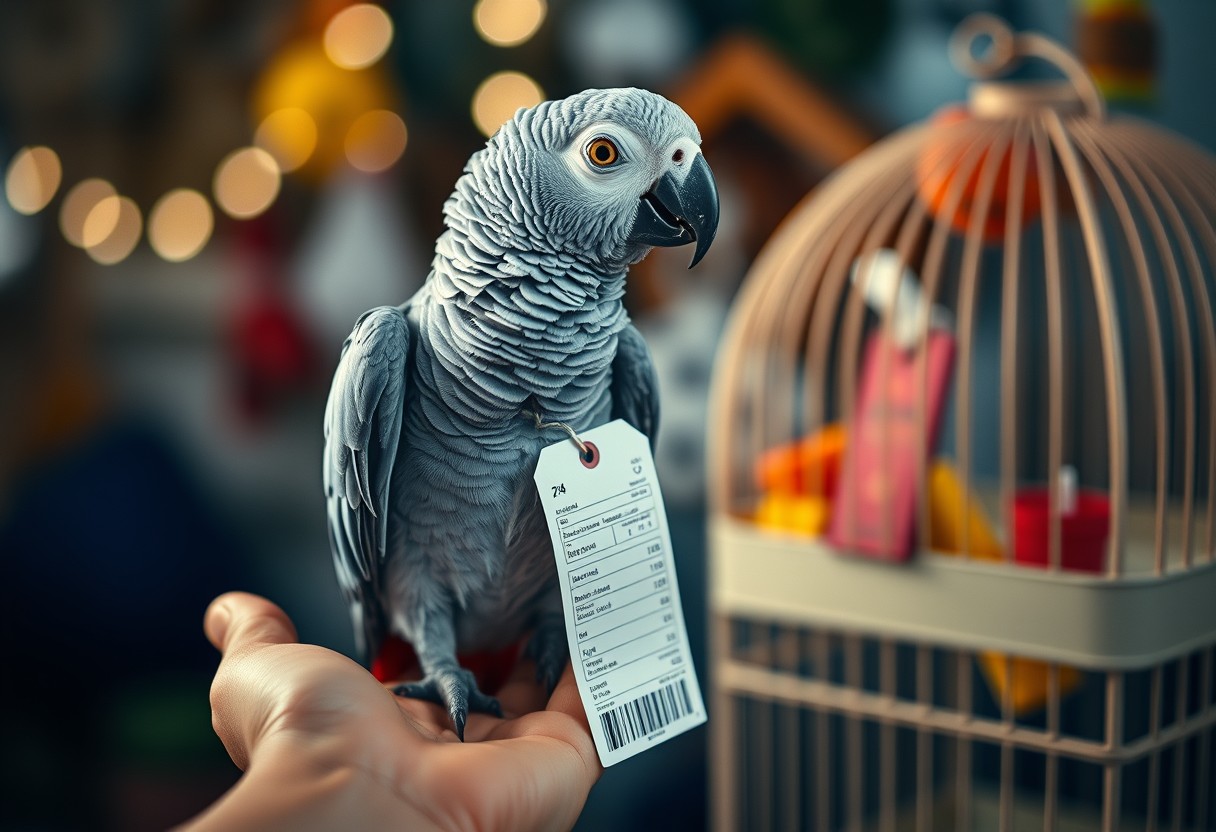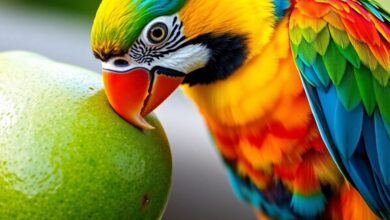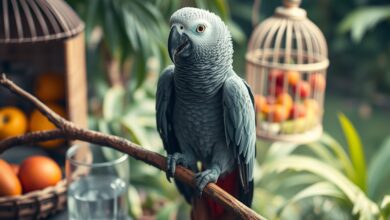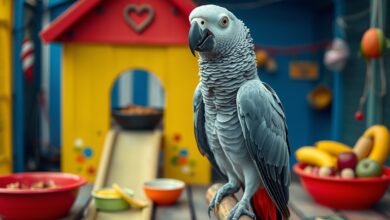Baby African Grey Parrot Price Guide – Factors to Consider

Just as you start exploring the world of Baby African Grey Parrots, understanding their price and the variables influencing it becomes important for your decision-making. Various elements, such as breeder reputation, unique traits, and location, play a significant role in determining what you might spend. It’s also important to consider additional costs, including food, housing, and veterinary care, which contribute to your overall investment. This guide will equip you with the insights necessary to make an informed choice, ensuring your new companion arrives at a healthy and suitable price point for your budget.

Key Takeaways:
- Price Variation: The cost of baby African Grey parrots can differ significantly based on factors such as breeder reputation and location.
- Age and Species: Younger parrots and different subspecies may demand higher prices, influencing the overall investment you will need to make.
- Health and Care: Ensure that the price takes into account the health checks, vaccinations, and care requirements provided by the breeder.
Types of Baby African Grey Parrots
African Grey Parrots are categorized into two prominent species, each showcasing distinct characteristics that appeal to different pet owners. These include:
| Congo African Grey | Larger size, striking color, and social personality. |
| Timneh African Grey | Smaller, darker plumage, and slightly quieter. |
| Hybrid African Greys | Combination of characteristics from both species. |
| Congo vs. Timneh | Different temperament and price points. |
| Availability | Varies based on species and breeder. |
Any choice between these types will depend on your lifestyle, budget, and preferences.
Congo African Grey
Assuming you’re considering the Congo African Grey, you’ll find these parrots are particularly admired for their vibrant plumage and social nature. They tend to be more outgoing and interactive with their owners, making them an appealing choice if you desire an engaging companion.
Timneh African Grey
Parrots of the Timneh African Grey variety are appreciated for their unique characteristics. They’re a bit smaller and possess a distinct gray and maroon plumage. While generally quieter than their Congo counterparts, Timneh African Greys can still be affectionate and intelligent companions.
The Timneh African Grey is often recognized for its calmer demeanor, which may suit individuals looking for a slightly more laid-back parrot. However, these birds can also exhibit destructive behaviors if not provided with enough mental stimulation. They are highly intelligent, requiring regular interaction and a challenging environment to thrive. Your selection should factor in these traits to ensure a harmonious relationship with your new feathered friend.
Factors Influencing Price
Assuming you are considering buying a baby African Grey parrot, several factors can influence its price. These include:
- Age
- Training
- Breeder reputation
- Health status
- Color mutation
- Location
Recognizing these elements can help you gauge the appropriate price range for your new feathered friend.
Age and Training
With each increasing stage of age and training, the price of baby African Grey parrots can significantly vary. (In general, fully trained birds will cost more than those that are younger or untrained.)
Breeder Reputation
There’s a major distinction between different breeders, and their reputation can greatly affect the parrot’s price. (Choosing a well-regarded breeder often means paying a premium, but this investment comes with benefits.)
It’s vital to consider the breeder’s reputation because they often determine the parrot’s quality and temperament. Reputable breeders prioritize health, socialization, and ethical practices, which ensures you are spending on a healthy and well-adjusted pet. Investing in a baby African Grey parrot from a trustworthy source enables you to avoid potential issues down the line that can arise from irresponsible breeding practices.
Pricing Guide by Region
Many factors influence the price of baby African Grey parrots, and your location plays a significant role. Pricing can vary considerably by region, affected by local demand, availability, and breeding practices. Understanding these regional differences can help you make a well-informed decision that aligns with your budget and preferences. (Choosing a reputable dealer in your area is crucial.)
North America
Regionally, baby African Grey parrots in North America typically range from $1,500 to $3,000. Prices can fluctuate based on the breeder’s reputation and the parrot’s lineage. (Investing in a parrot from a trustworthy source ensures you receive a healthy bird.)
Europe
Clearly, the costs of baby African Grey parrots in Europe are similar, usually between €1,500 and €3,500. Prices might vary due to different regulations, breeding practices, and the popularity of the species in specific countries. (Determining the right breeder can significantly impact your experience.)
Plus, you should also consider additional costs like shipping, health checks, and any required permits, which can add to the initial price tag. Keep in mind that prices may vary depending on the country, so doing your research is vital. Choosing a responsible breeder not only affects cost but also ensures you are adopting a well-cared-for parrot. (Verify all credentials before making a purchase.)
Tips for Buying a Baby African Grey Parrot
Keep the following tips in mind when purchasing a baby African Grey Parrot:
- Research reputable breeders
- Inspect the bird’s living conditions
- Ask about diet and socialization
- Inquire about health screenings
- Check for any behavioral issues
After gathering all this information, you can confidently proceed with your purchase.
Assessing Health and Behavior
Little signs of health issues or poor behavior can greatly affect your future with your African Grey. (Evaluating overall health and temperament is imperative.)
Understanding Documentation and Legality
There’s a significant importance in ensuring that you receive all necessary documentation, including health certificates and legal permits. (Confirming the legality of your bird can prevent future complications.)
Understanding the requirements can differ greatly by region and can also include information about the parrot’s origin and vaccinations. Proper documents protect you legally while ensuring your African Grey is ethically sourced and healthy. (Make sure to ask for these vital documents before finalizing your purchase.)
Parrot ownership comes with responsibilities, including factoring in legal requirements and health precautions. Take your time to understand local laws and ensure all documentation is in order to support a healthy and safe environment for your African Grey.

Step-by-Step Buying Process
Unlike purchasing an ordinary pet, acquiring a baby African Grey parrot involves a detailed process. Below is a simplified guide to help you navigate this journey:
| 1. Research Breeders | Look for reputable breeders and check their credentials. |
| 2. Evaluate Personal Readiness | Assess your lifestyle and whether you can commit to a parrot’s needs. |
| 3. Visit Breeders | Meet the parrots and ensure the environment is healthy. |
| 4. Ask Questions | Inquire about the bird’s history, health, and care requirements. |
| 5. Finalize Purchase | Secure your baby African Grey through a proper transaction. |
Research and Preparation
You need to conduct thorough research on African Grey parrots, including their care, diet, and social needs. This preparation will help you make a sound decision about adding a companion to your life (a pet of this nature requires significant commitment).
Finalizing the Purchase
Clearly, the final step in the buying process is securing your parrot through a successful transaction. This includes filling out required paperwork, discussing care instructions, and ensuring the bird is in good health before bringing it home.
A few final considerations include checking the health guarantee provided by the breeder, understanding the bird’s dietary needs, and preparing a safe environment for your new pet. You should also confirm that the bird has been properly weaned and socialized, as these factors significantly impact its long-term health and behavior. Taking the time to ensure all these details are handled diligently will benefit both you and your new companion.
Pros and Cons of Owning a Baby African Grey Parrot
Not only are baby African Grey parrots intelligent and affectionate companions, but they also come with their own set of challenges. Understanding these pros and cons can help you make an informed decision about adding one to your home.
| Pros | Cons |
|---|---|
| Highly intelligent and trainable | Requires extensive social interaction |
| Strong bond with owners | Can develop behavioral problems without stimulation |
| Impressive vocal abilities | Time-consuming care and attention needed |
| Long lifespan (50+ years) | High cost of care |
| Beautiful and unique appearance | Requires a dedicated living space |
Benefits of Companionship
While baby African Grey parrots are often known for their playful and affectionate nature, they also offer significant emotional companionship. These birds can fill your home with joy, laughter, and love, creating a bond that can last a lifetime.
Commitment and Care Requirements
The care of a baby African Grey parrot demands your time and dedication. You need to provide a balanced diet, a safe and spacious cage, and regular opportunities for mental stimulation and social interaction. Without this investment, the parrot can become bored or distressed, leading to unhealthy behaviors.
Plus, you will need to be aware that their commitment can last decades; typically, African Grey parrots live 50 years or more. This means supplying constant mental stimulation through toys and interactions, along with regular health check-ups. Owning a baby African Grey is not just a fleeting responsibility; it requires dedication and serious consideration to create a fulfilling life for both you and your feathered friend.
Final Words
Conclusively, understanding the various factors that impact the price of baby African Grey parrots will empower you to make informed decisions when searching for your new companion. Consider aspects such as the bird’s age, health, and breeder reputation in your evaluation. For a more detailed exploration, you can refer to this African Grey Parrots for Sale: A Comprehensive Guide. This knowledge will help you invest wisely in your future pet.
Q: What are the main factors that influence the price of baby African Grey parrots?
A: The price of baby African Grey parrots can vary significantly based on several factors. First, the bird’s lineage plays an important role—birds from reputable breeders often cost more due to their health and breeding history. Second, location can affect pricing; areas with high demand and few breeders may see elevated prices. Third, the age and training level of the parrot can impact the cost; younger or better-trained birds are typically sold at a premium. Lastly, the bird’s overall health status and any genetic traits may contribute to the price as well.
Q: How does the availability of baby African Grey parrots in my region affect their price?
A: Availability is a significant factor in determining the price of baby African Grey parrots. In regions with a high number of breeders, you may find a more competitive market, which can lower prices. Conversely, if there are fewer breeders and a high demand for these birds, prices can rise due to scarcity. Additionally, those in remote areas might face higher costs due to shipping and transportation fees, as well as limited local options for purchasing these parrots.
Q: Are there ongoing costs associated with owning a baby African Grey parrot that I should consider when budgeting?
A: Yes, owning a baby African Grey parrot entails various ongoing costs beyond the initial purchase price. These may include food and nutrition, which should focus on high-quality pellets and fresh fruits and vegetables. Regular veterinary check-ups are important for maintaining your parrot’s health, and these can incur significant expenses. Additionally, you should account for the cost of toys, cage maintenance, and any necessary supplies, as well as potential pet insurance to cover health issues. Understanding these expenses will help in budgeting for the long-term care of your parrot.




